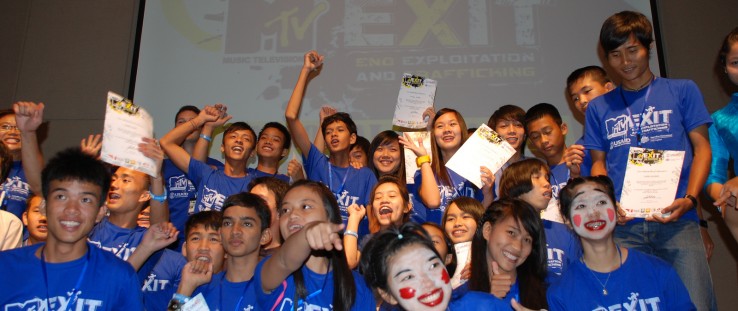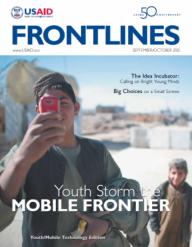 Students from Burma and Thailand celebrate after performing anti-trafficking awareness scenes and graduating from the first-ever MTV End Exploitation and Trafficking (EXIT) Youth Forum held June 2011 in Chiang Mai, Thailand.
USAID/Bonnye Hart
View More Photos
Students from Burma and Thailand celebrate after performing anti-trafficking awareness scenes and graduating from the first-ever MTV End Exploitation and Trafficking (EXIT) Youth Forum held June 2011 in Chiang Mai, Thailand.
USAID/Bonnye Hart
View More Photos
 Students from Burma and Thailand celebrate after performing anti-trafficking awareness scenes and graduating from the first-ever MTV End Exploitation and Trafficking (EXIT) Youth Forum held June 2011 in Chiang Mai, Thailand.
USAID/Bonnye Hart
View More Photos
Students from Burma and Thailand celebrate after performing anti-trafficking awareness scenes and graduating from the first-ever MTV End Exploitation and Trafficking (EXIT) Youth Forum held June 2011 in Chiang Mai, Thailand.
USAID/Bonnye Hart
View More Photos
With more than half the world's population under the age of 30, youth issues have taken center stage on the global agenda. That includes education and employment, health care and family life, and civic engagement and political participation. While large, idle youth populations have often been associated with instability or crime and violence, young productive labor forces have been associated with economic growth in East Asia, and are routinely discussed as the heart of Africa's potential to reap the so-called demographic dividend.
At the same time, youth-led social and political movements, and a new class of young innovators and CEOs like Ushahidi's Ory Okolloh, are inspiring belief and support for young people as partners and leaders in development, peace and prosperity. In his Aug. 12 International Youth Day message, USAID Administrator Rajiv Shah reminded us all that "with vision and passion, youth serve as vital change-agents in their communities and countries."
Building on decades of youth programming in nearly 40 countries, USAID is elevating youth issues with: activities that support, protect, prepare and engage young people; renewed efforts to mainstream and integrate youth across sectors throughout the program cycle; expanded dialogue, outreach and partnerships with and for young people; more research and evaluation; and a forthcoming policy on youth in development. These efforts are grounded in the belief that youth hold great potential, and the understanding that achieving core development objectives is increasingly dependent on them.
Related Content
The projects presented in this issue of FrontLines demonstrate many of the best practices and principles that are informing and guiding our expanding youth program and policy portfolio. For example, a number of articles highlight how embracing technology and innovation by and for youth can not only empower and engage young people everywhere, but also bring new development solutions to the table.
We hear from USAID/Kenya about how community parliaments, or bunges, are driving democratic participation and fomenting tomorrow's leaders. Similarly, the story about teacher-training in Braille from Montenegro embodies our commitment to account for the diversity of youth in our programming and design projects that recognize differences and similarities in striving to provide opportunity for all.
Promoting gender equality among young people is critically important to youth development and is illuminated in the story of our work in the Democratic Republic of Congo reducing gender-based violence, and our work in Yemen educating girls. Finally, the articles on improving land administration in Liberia and education activities in Lebanon spotlight the importance of taking a systems-level approach in order to affect young people at scale.
In her February "Youth Rising" remarks earlier this year in Tunisia, Secretary of State Hillary Rodham Clinton said: "[T]here are underlying dynamics that are affecting young people everywhere-changes in demographics and technology, economics and politics that are bringing together this unique moment in history. Young people are at the heart of today's great strategic opportunities and challenges, from rebuilding the global economy to combating violent extremism to building sustainable democracies."
In April, the Agency participated in Global Youth Service Day, and last month we celebrated International Youth Day, this year themed "Building a Better World: Partnering with Youth." Let us leverage this momentum and continue to shine a light on successes. And let's create new initiatives in our portfolio to seize the promise in young people and advance our youth development work towards a brighter future for all.










Comment
Make a general inquiry or suggest an improvement.